The largest dogs in the world
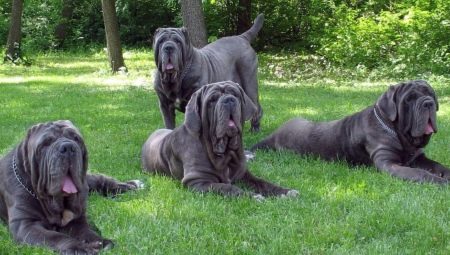
There are a huge number of varieties of dogs in the world. Some of them have an incredible coat type, an extraordinary color, an amazing history of origin, or simply a unique size relative to the rest of the four-legged pets. In this article, we will get acquainted with the largest dogs in the world, as well as with the peculiarities of their maintenance at home.
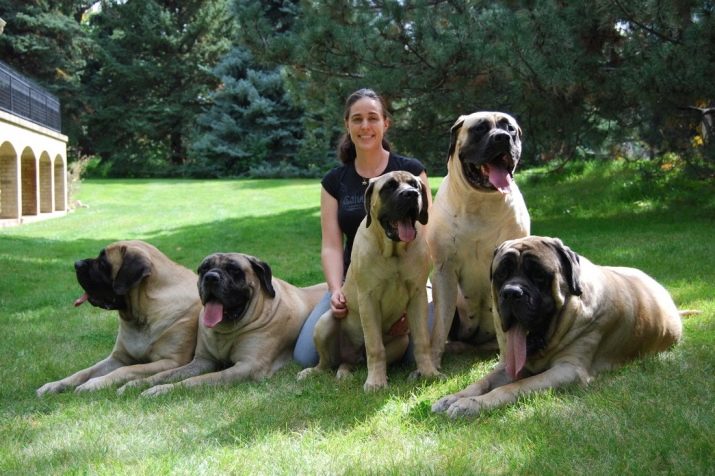
Dogs with what parameters are considered large?
Unfortunately, today there is no official division of all dogs based on their size and shape. Experienced breeders have conventionally divided all dogs into giant, large, medium, small and dwarf breeds. In the process of determining the size of pets, a number of parameters are taken into account: maximum growth rates, muscular development, average body weight, state of the skeletal system.
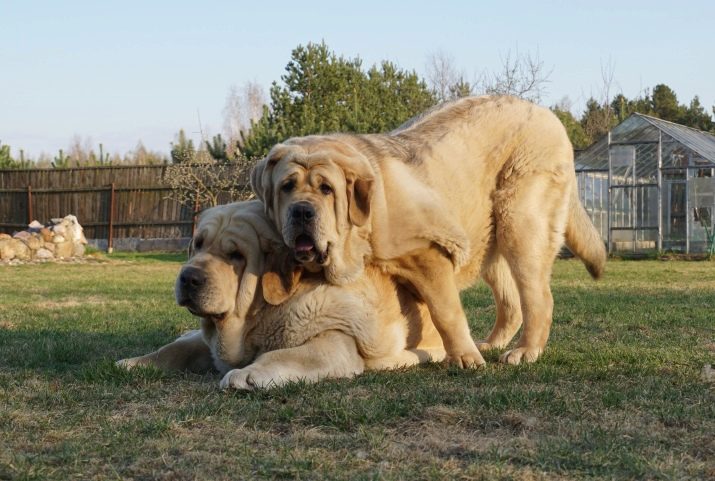
As a rule, breeds with the following external characteristics are ranked as large dogs:
- growth indicators at the withers must be at least 60 centimeters;
- the weight of an adult must be at least 26 kilograms.
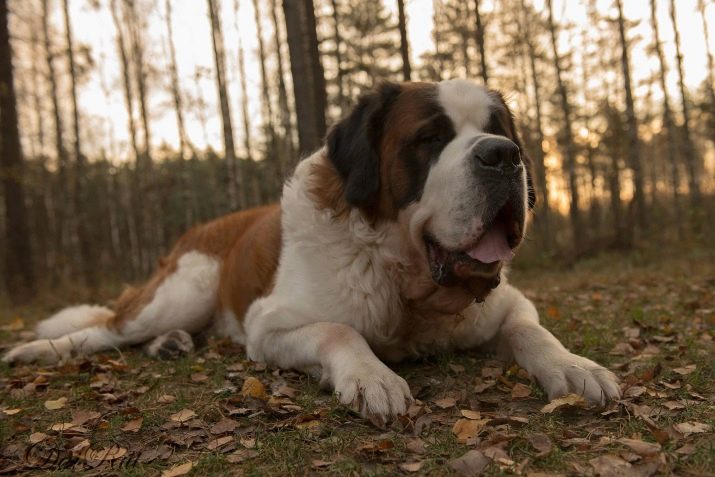
The list of breeds suitable for these characteristics also includes representatives of giant varieties. This means growth at the withers up to 75-80 cm and a weight of more than 45 kg. Among the largest individuals, representatives of the breeds of Great Danes, Mastiffs and Wolfhounds are most often found.

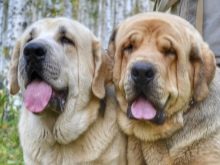
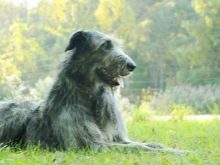
The main purpose of large and large dog breeds is usually for guarding, service or simple companion activities. Historical and modern cases are known when representatives of large breeds were involved in hunting and protecting herds of cattle and small ruminants.
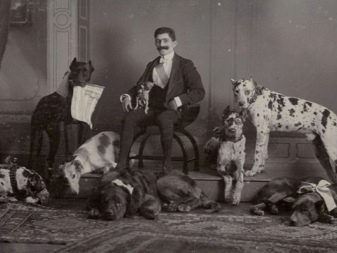
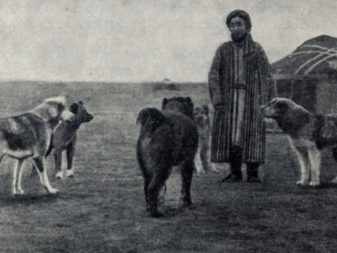
Often, these pets act as ordinary companions, nannies for children, as well as guides for blind people and disabled people.
Advantages and disadvantages
Each breed of dog has its own individual pros and cons, but there is a list of positive and negative points that are equally true for all large dogs.
Let's start with the pros.
- Security. A large dog is a wonderful guard not only for you, but for your entire family. With such dogs it will be calmer to walk along the evening streets and not be afraid that you will be attacked or robbed. No one in their right mind would dare to attack a passer-by with a mastiff or wolfhound. Such dogs are most often unusually loyal and intelligent - they are remarkably able to feel aggression from strangers and passers-by.
- Nice character. Almost all breeds of large dogs are distinguished by a docile and good-natured character, which allows them to be raised in families with small children and other pets. Large dogs often act as pillows for babies and are ready to protect the infant's sleep to the end, even if their own life is threatened.
- Health. Large and muscular dogs, as a rule, have very powerful immunity, which helps them to endure many infectious and viral diseases, cold and drafts.
- Decreased activity. Individuals of large sizes rarely have an irrepressible and extremely active character, they are easier to control and lure. As a rule, these pets prefer to spend time for rest or measured walks. A large number of muscles, heavy bones and an impressive body do not allow them to perform the fun that is common for dwarf and small breeds.
- A real dog. Many believe that it is the dogs of large breeds that are full-fledged representatives of the canine. It is also believed that dogs of larger species are more amenable to training and training.
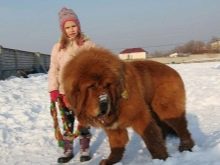
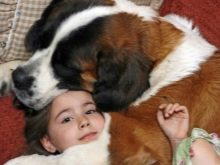

However, there are also disadvantages.
- Expenses. The larger the dog, the more it requires financial and time investments. This applies to both regular spending on feed or natural food, and ordinary grooming of the dog's coat. So, brushing a Caucasian Shepherd or Newfoundland can take up to several hours every day.
- Large space. The size of the dog affects not only feeding and care, but also the conditions of detention. Small apartments are poorly suited for large pet dogs; in most cases, a fenced-in area or a plot of a private house becomes an ideal option. Within the walls of small apartments, large pets feel embarrassed and can cause irreparable damage to your property during their entertainment.
- Short lifespan. According to some reports, large breeds of dogs live slightly less than small and medium breeds. This is due to the massive physique, great stress on the cardiovascular system and limbs. Large dogs spend more and more time in a calm state with age, which leads to obesity and the development of other serious diseases.
- Remarkable strength. Walking with large dogs can result in significant injury to their owners. These dogs are difficult to keep on a leash, in an agitated state they can jerk the leash so hard that they knock their owners off their feet. In order to prevent such behavior, dog handlers advise from childhood to teach a pet to follow the owner everywhere on walks, and not to move away over long distances.
- Prejudice. If for you a big dog is an excellent defender against criminals and ill-wishers, then for other passers-by these dogs may seem like real monsters, capable of crippling both them and their children. Basically, such problems begin after walking not far from playgrounds or busy recreation areas.


Remember that some of the disadvantages can be corrected with the help of proper education, care and maintenance - a lot depends on the owner of the dog.
Top giant rocks
Unfortunately, there is currently no official list of the largest dog breeds in the world. The problem in comparing dog sizes is compounded by variations in the rate for certain breeds. Below will be presented the top 15 giant breeds (in descending order of height) of dogs based on opinions and surveys on the Internet. Please note that your opinion of the largest dogs on Earth may differ from the rankings below.
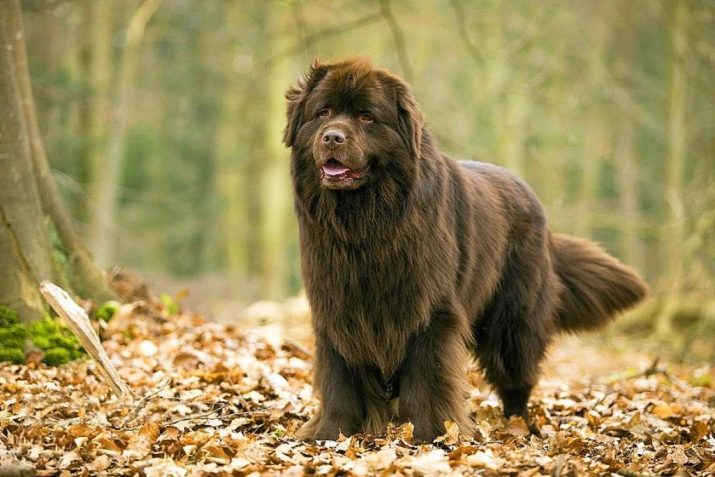
- English Mastiff. It is considered one of the oldest English species. Today it is presented in the form of the largest and most massive variety of dogs in the world. Individuals of this breed grow up to 91 cm, as for weight indicators, they can vary significantly depending on the age of the dog - from 70 to 105 kg (in males). Mastiffs differ from their fellows by balanced, courageous and devoted character. These dogs are considered an ideal family option, as they are patient with children, do not require special care, and also provide their family members with reliable protection from all ill-wishers.

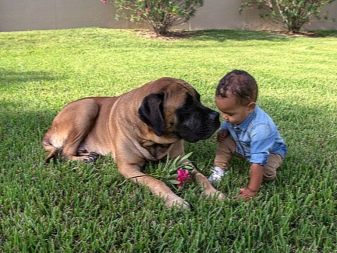
It is on the basis of the genetic material of the English mastiffs that the largest individuals of dogs that exist on the planet are bred.
- Great Dane. One of the breeds, for the creation of which the genetic material of the English Mastiffs and Irish Greyhounds was used. These animals are distinguished by unique growth, elongated and narrow constitution, as well as incredibly long and slender limbs. So, Danish Great Danes bitches can grow up to 85 centimeters, and males often grow up to 110 centimeters or more. If we talk about average weight indicators, then bitches of this breed weigh no more than 85 kg, while males can reach 100 or more kilograms. Pedigree Danish mastiffs are capricious and very independent by nature, they do not tolerate disrespect for their person, are suspicious of strangers, but adore children and joint pranks with them.
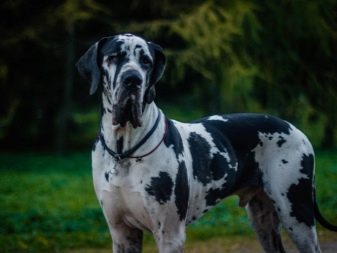
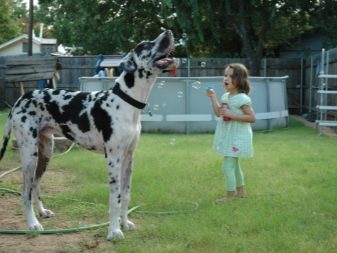
- St. Bernard. Another representative of giant dog breeds that came to the territory of Europe and Russia from the Italian Alps. The first specimens of St. Bernards were bred exclusively as rescuers - they helped quickly find people who had suffered from avalanches and snow falls. A distinctive feature of these dogs is considered to be the original barrel on their collars, into which brandy was poured in ancient times, designed to warm the victims. St. Bernards are incredibly good-natured, peaceful and companionable pets - this is one of the few breeds that are very difficult to anger.
- Due to their dense coat and massive build, these dogs are considered one of the largest in the world. So, males of these dogs grow up to 90 centimeters at the withers, and females usually do not exceed 80 centimeters. If we talk about weight, then most often there are individuals of this breed weighing more than 100 kg.
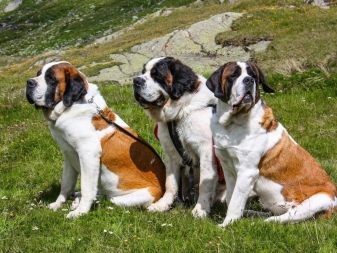
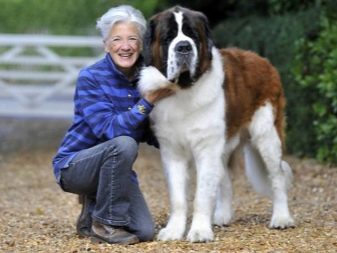
- Tibetan mastiff. To some extent, a legendary breed - considered by many to be one of the oldest in the world. This breed got its name from the place of its origin and breeding - in Tibetan monasteries, these dogs served as watchmen and guides in the dangerous mountainous terrain. In terms of size, Tibetan Mastiff males can grow up to 81 centimeters in length (females - up to 71 cm), and in weight they can gain up to 82-85 kilograms. Individuals of this breed are extremely calm, balanced and extremely clean.

These dogs are considered by many to be ideal for breeding in large families with small children - here mastiffs act as real nannies.
- Komondor or Hungarian Shepherd Dog. Many consider this dog to be the most amazing breed. All because of the extraordinary (plush) coat of Komondors - their white wool is placed in a dense layer all over the body in the form of long and thick dreadlocks.In their homeland, Komondors were used exclusively in sentry activities - the white color and extraordinary growth of the coat allowed these pets to literally merge with the sheep herd and successfully control it.
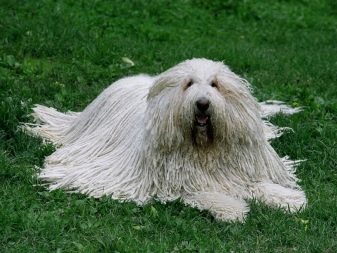

These dogs can grow up to 80 centimeters in height and gain up to 60 kilograms in weight.
- Pyrenean Mastiff. It is believed that this breed came to the territory of Europe and Russia from Spain. Initially, individuals of it were used to escort and protect herds of sheep, as well as in the protection of trade carts. Individuals of these dogs are not only distinguished by their high growth - up to 81 centimeters, but also significant weight - up to 85 kilograms (although some males grow up to 100 kg). Today these dogs are used as guards and companions for children and women, many breeders prefer to keep them in apartments - these dogs love a quiet rest without destructive behavior.
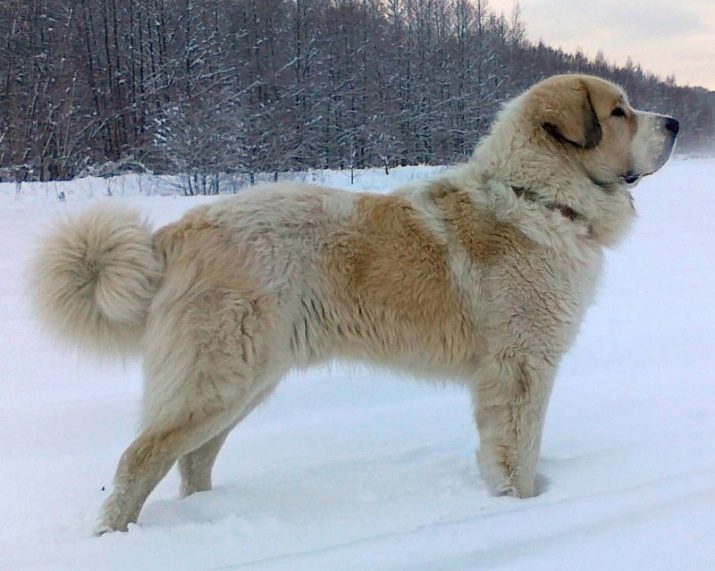
- Caucasian Shepherd Dog. A widespread variety on the territory of Russia. This breed of dog is characterized by an intelligent but extremely independent temperament, as well as an extremely massive build and fluffy coat. In addition to Russia, individuals of these dogs are also found in Armenia and Azerbaijan. These dogs are considered wonderful watchmen, but they require a strong-willed, strict and strong character from a person.
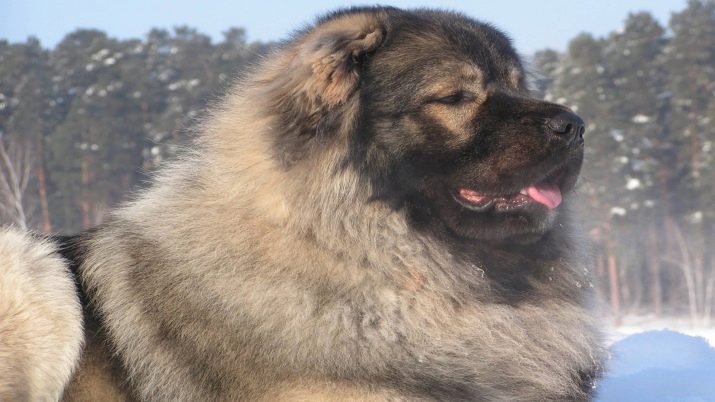
In terms of size, the males of these pets often grow up to 81 centimeters in height, and in terms of weight, they can gain up to 110 kilograms.
- Tosa Inu. Initially, individuals of this breed were bred exclusively in Japan, where they served as fighting dogs and participated in hostilities. Unfortunately, even today the standard regarding the size of these dogs is very controversial - for example, there were individuals with a weight of 35 to 60 kg and a height of 60 to 70 cm at the withers. Over time, individuals of the Tosa Inu in Europe underwent significant selection changes, which led to an increase in the size of these dogs - up to 82 cm in height and up to 100 kg in weight. These pets are distinguished by a powerful physique, a reliable and loyal attitude towards the owner, as well as a wary attitude towards all strangers.

- Newfoundland. Some call these dogs "divers" and "nurse dogs" - all because of their rich historical background. Once they were actively used in swampy areas as an assistant to fishermen and hunters. Today, these shaggy dogs are actively used as rescuers - their fur has a unique water-repellent structure, and special membranes are located between the toes, which allow them to move very quickly against the current. Among the Newfoundlands there are record holders in weight (the maximum mark for the current day is 120 kg), but, as a rule, these dogs do not grow above 75 cm and do not weigh more than 70 kg (males).
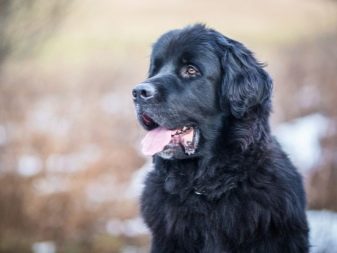
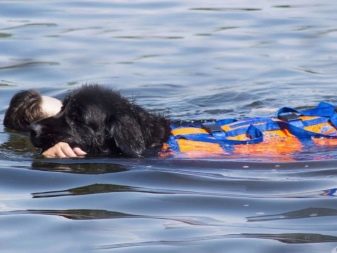
Despite their impressive size and enormous strength, these dogs are endowed with an incredibly friendly and good-natured character, and are also able to make decisions very quickly in an emergency.
- Leonberger (or "lion"). Not a particularly popular dog breed from Germany. They got their unusual name due to the name of the German city of the same name - Leonberg. These dogs differ from others in their rather long black hair and tan markings. Their coat also has a unique water-repellent coating, which helps them easily withstand severe frosts and cold weather. Males of this breed of dogs grow up to 75 centimeters in height and gain up to 70 kilograms in weight. If we talk about temperament, then in the right hands these dogs are very smart, reliable as guards and extremely playful.
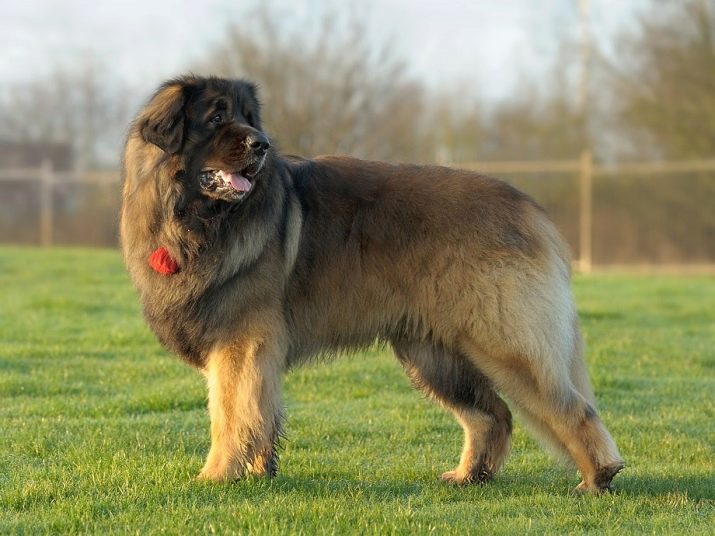
Despite their impressive size, the Leonberger live very shortly - up to 7 years under the best conditions of detention.
- Irish wolfhound. Along with the Tibetan Mastiffs, it is considered one of the oldest dog breeds in the world.These pets are distinguished not so much by their strong constitution or great weight, but by their high growth up to 86 centimeters. In terms of weight, this breed cannot be called a champion - on average, individuals lose 55 kg (males). The first mentions of this breed are found in the records of Ancient Rome in the 4th century BC. NS. These bright representatives of hunting dogs are distinguished by their incredible speed, maneuverability and ability to track prey over great distances. This breed cannot be attributed to any specific character traits, Irish wolfhounds are extremely individual, and in the hands of different owners they can behave completely differently.
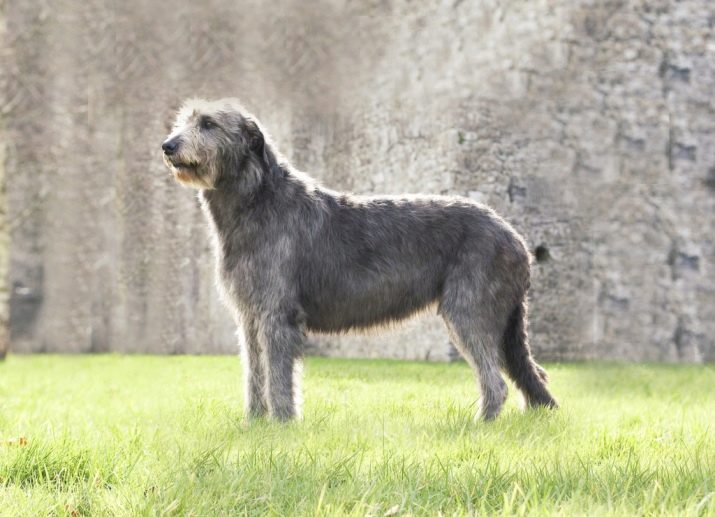
- Moscow watchdog. This breed appeared only in the middle of the 20th century on the territory of Russia. For its creation, material was used from many Russian and European breeds, among which the Caucasian Shepherd Dog and St. Bernard can be distinguished. If we consider the characteristics described in the standard of this breed, then males of this breed grow up to 78 cm in height, and in terms of weight, they can gain up to 70 kg. In terms of character, this breed can be called extremely calm, independent and balanced.
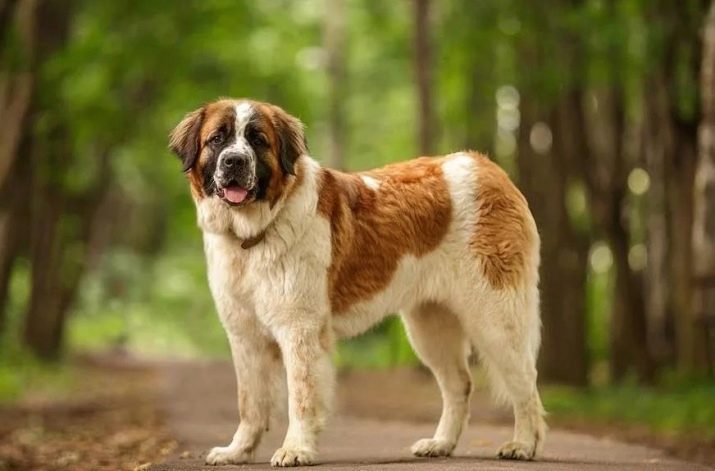
Moscow watchdogs are considered ideal guards and watchmen who will defend the owner or entrusted territory to the last breath.
- Neapolitan Mastiff. Another amazing breed of guard dogs, which differs from the rest with a unique fold-type skin - the body, muzzle and chest of these animals are covered with continuous folds. Thanks to this appearance, these pets look like a huge living drop. It is the representative of the Neapolitan Mastiff under the nickname Fang that you can see in the movie "Harry Potter and the Chamber of Secrets." These dogs grow up to 74 centimeters in height and up to 70 kilograms in weight. Despite their large size and appearance, these dogs are amazing good-natured people who love all members of their family, especially children.
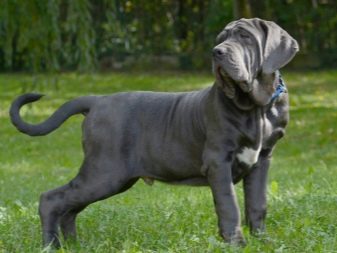
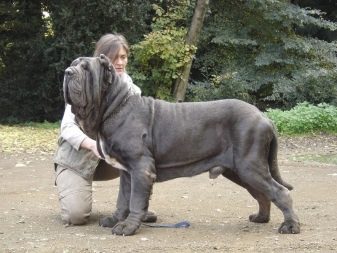
- Deerhound. A fairly young, but widespread hunting breed in Scotland and England. Official recognition came to deerhounds only towards the end of the 19th century. These pets differ from other relatives by their hardy and slender constitution, as well as surprisingly developed olfactory qualities. According to the standard, deerhound males grow up to 80 centimeters at the withers and up to 50 kilograms in weight.
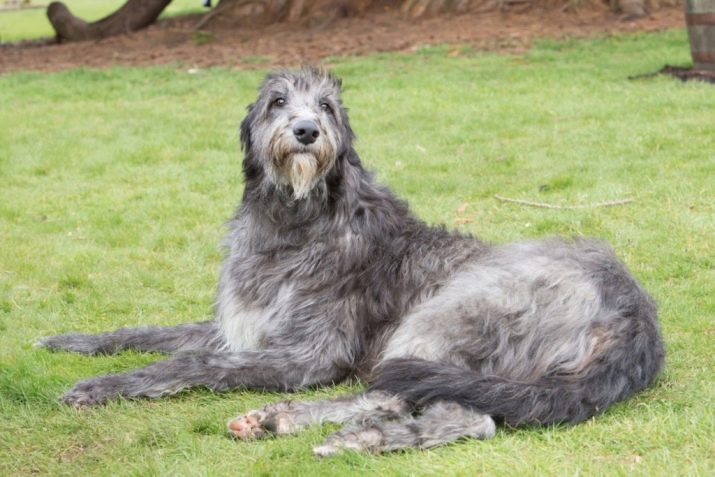
By nature, these pets are very friendly, gullible and adore any manifestations of affection, which is why they should not be started as watchmen or guards.
- Kuvasz. These dogs are considered one of the oldest service breeds in Hungary. In the Middle Ages, individuals of this breed were considered a sign of elitism - only people of the high class could own them, in particular, kings and those close to the royal family. These pets are quite tall - up to 76 centimeters, as well as surprisingly large weight among individuals - up to 90 kg. This type of service dog is considered one of the easiest to keep: Kuvasz are loyal, reliable and brave when it comes to protecting their owners.
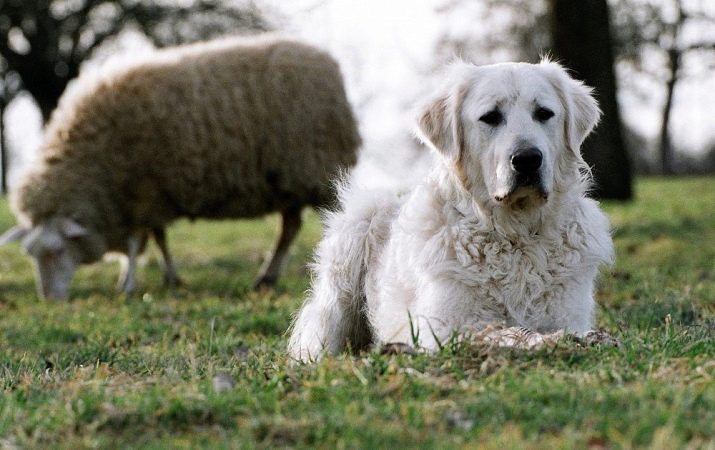
Record holders
Among the specimens of the breeds presented above, there are record holders in relation to individual qualities and merits - let's get to know them better.
- The largest dog in the world. Among the breeders of English mastiffs such a name is known as Aikama Zorbo - this is the largest male of the English mastiff in the world, which was rightfully recognized as the largest dog in the world. In the Guinness Book of Records, this dog was recorded with the following parameters: height - 94 centimeters, weight - 155.6 kilograms, length (from nose to tip of tail) - 251 centimeters. The male was born in 1981, his owner was the English breeder Chris Iraklides.
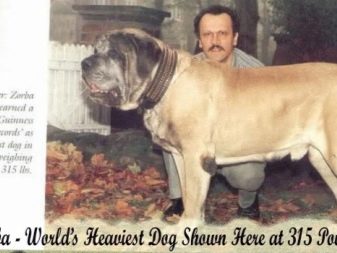
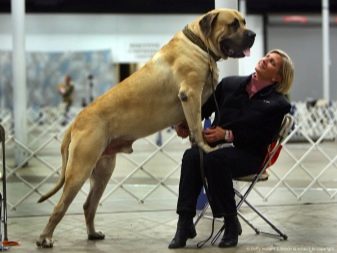
Unfortunately, today the fate of this handsome man remains unknown.
- The tallest dog in the world. A striking representative of Danish Great Danes is a dog named Zeus - a very well-known name among breeders of large breeds of dogs. This dog was distinguished by simply phenomenal growth of 112 centimeters and weighing more than 70 kilograms. Under this growth, Zeus was included in the Guinness Book of Records as the tallest dog in the world. The owners of Zeus noted that their pet required at least 14 kg of fresh food daily for the full functioning of the body. Despite the fact that Zeus died back in 2014, he remains an extremely popular dog among all dog owners.
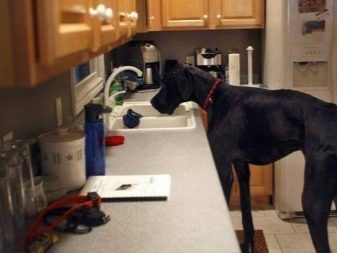
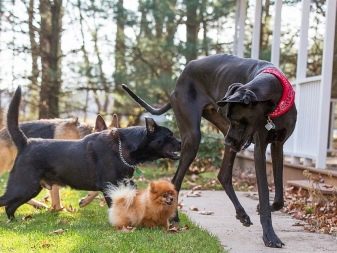
- The heaviest dog in the world. Among the St. Bernards, the most striking representative is the male Benedictine, who, with an abnormal weight of 166 kg, went down in history as the heaviest dog in the world. Among the representatives of this breed there are also very long individuals that have entered the Guinness Book of Records. For example, another male named Major F. with a length from the tip of the nose to the tip of the tail of 259 centimeters was recognized as the longest dog in the world.

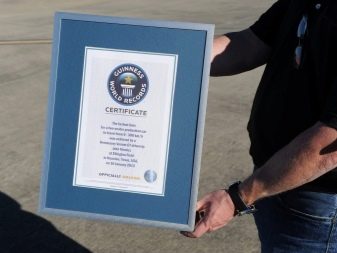
- The most expensive dog in the world. There are no prominent Tibetan mastiffs in terms of size or height, but a Tibetan Mastiff named Hong Dong is known today as the most expensive dog in the world. This story is most popular in China. Judging by the data, the coal magnate became the buyer of the specimen, who gave 1.5 million euros for it.
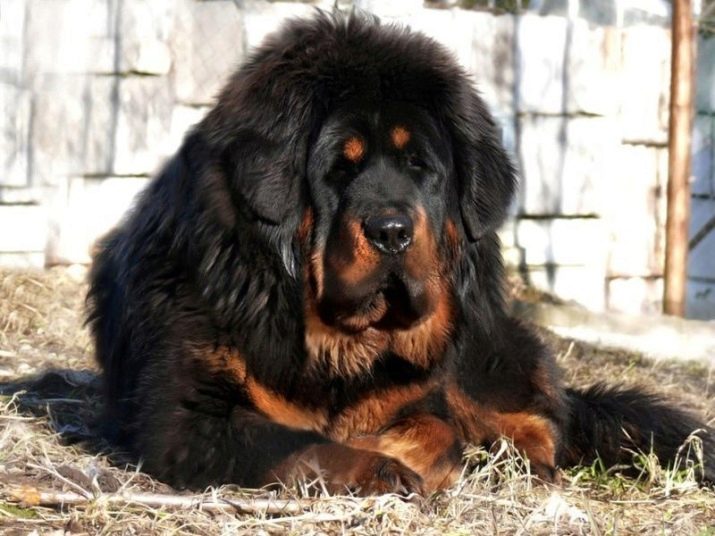
This was an 11-month-old male with a weight of 80 kg, but he had a unique color and long, silky, bright orange coat.
- The most powerful dog in the world. It is not for nothing that the opinion is popular in the world that it is the Newfoundlands that are the strongest and most powerful breed of dogs in the world. This opinion was formed on the basis of the achievement of a bitch of this breed named Barbara Allens Dark Hans. With its insignificant weight (about 45 kg) and small stature, this dog in 1979 managed to drag 2.29 tons of cargo along the concrete surface.

Subtleties of content
Every dog has its own individual needs, and therefore it is difficult to create an accurate set of grooming rules that are equally true for each breed of dog. Below is a list of general guidelines that will be helpful when keeping most large dog breeds.
- A place. An indispensable factor in the maintenance of a large four-footed friend is to provide a large amount of space for his games, fun and jogging. Experienced breeders advise taking large dogs only to multi-room apartments or to private houses with a large and fenced area. It will be nice if the area is equipped with a number of special training and training simulators.

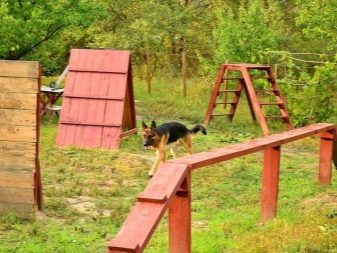
- Hygiene. As already mentioned, the more the dog, the more cares it brings to its owners. To maintain a neat and healthy appearance, you should brush your teeth, rinse your eyes and examine your ears at least 1 time per week. In addition, most large dog breeds have long, coarse coats that require regular grooming. For comprehensive and professional care of the pet's appearance, breeders advise contacting grooming salons at least once every six months.
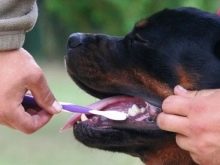


- Walking. Regardless of breed, age and gender, any dog needs regular outdoor walks. Some of the breeds presented above cannot be kept in a closed apartment at all - fresh air and daily adventures are vital for the healthy functioning of their body. A stagnant and inactive lifestyle will make any dog passive and even aggressive.
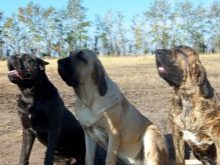
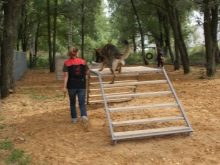

- Children. Despite the fact that most large dog breeds are exceptionally good-natured, in the first months of the appearance of an adult dog in the house, carefully monitor all contacts between the pet and your children. Every pet has its own threshold of patience, after which these dogs can unwittingly inflict serious injury on your child.The same goes for walks in the fresh air - these dogs should always be taken out only with a muzzle and with a leash.
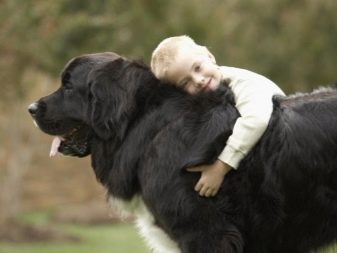
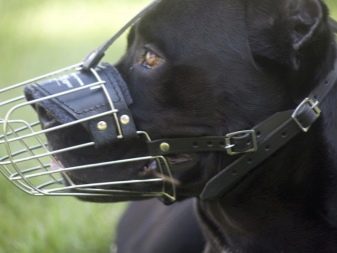
So you will not only protect everyone around you from your pet, but also will not give others a reason to reproach you for walking your "giant".
- Upbringing. Some of the above dog breeds have an extremely self-confident, independent and strong character that not every breeder will be able to cope with. A very important point in the upbringing of these dogs is to establish their authority as the owner from the very first days of the pet in the house. If the upbringing turns out to be ineffectual, you will have an absolutely uncontrollable and capricious pet in your hands, which will sweep away everything in its path. Large dogs are very difficult to train in adulthood - the pet feels its size and strength, and therefore simply does not perceive the owner as one who has the right to order him.

For the largest dog breeds, see the next video.






































